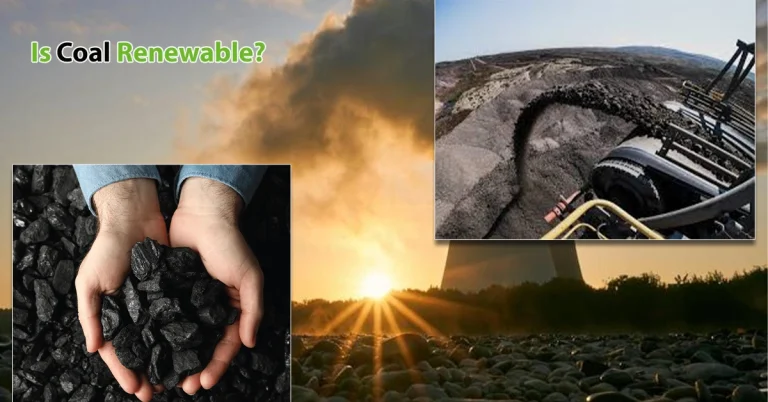For years, coal has powered our homes and businesses. It has remained a reliable source of power and contributed to industrialization and economic development.
But is coal renewable? The short answer is “no.” The long answer is covered in this guide. We will explore what the word “renewable” means in energy terms and why coal does not fall under it, how this rock was formed, its role in the US, and how coal compares to renewable energy sources.
30-Second Summary
Coal has been an important source of energy in the world for decades. However, the question “Is coal renewable?” confuses some people.
This guide explores the answer in detail. Moreover, find out the formation process of coal, its environmental impact, its role in electricity generation in the US, how it compares to renewable energy, and its future.
What “Renewable” Means in Energy Terms?
In energy discussions, you must have heard the phrase “renewable energy.” But what does it actually mean?

Renewable energy can be replenished or regenerated on a human scale. For instance, sunlight is continuously available, water cycles through hydropower, and wind flows. These resources will stay indefinitely (as long as their sources exist).
On the contrary, nonrenewable energy resources form slowly over geological time and cannot be replaced once consumed within a human lifetime or even many lifetimes.
In short, these resources are finite, and if consumed completely, it is nearly impossible to replenish them. This classification is necessary to understand how sustainably we can rely on a resource for a long time.
When we ask, “Is coal a renewable resource?” we are basically asking if coal can be replenished in a humanly-relevant timeframe. The evidence shows that it cannot, therefore, it is nonrenewable.
Coal Formation Process
To understand why coal is nonrenewable, we need to understand how it forms.
Stage 1: Accumulation of Plant Material
Coal formation took millions of years. It started in swampy areas. When plants and trees died, they accumulated under waterlogged conditions and formed peat.
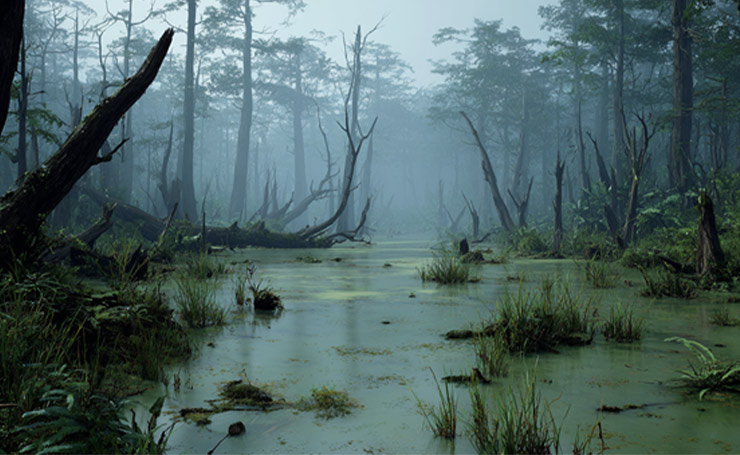
During the Carboniferous period on Earth (which was around 359 to 299 million years ago), the climate and geological conditions were perfect to create peat marshes.
Stage 2: Peat Formation
The reason behind peat formation was the death of plants. They would sink underwater and decompose slowly due to low oxygen content. As plants were decomposing slowly, they started to form a thick layer.

Every time a new plant died and sank, it increased the pressure and weight on the lower layers. This pressure and microbial activity in the initial stages started to compact the material and remove some of the water and gases.
This accumulated material is called peat, which is a brownish black material and contains around 60% carbon.
Stage 3: Burial under Sediments
Plants continued to layer on top of each other, and geological changes, water level, and precipitation continued to bury it under the layers of sediment.

As peat kept getting buried deeper, it was subjected to high temperature and pressure. At this stage, the microbial activity slowed down, and the chemical transformation of peat into coal started.
Stage 4: Coalification
Buried peat went through chemical changes and became more compact due to heat and pressure. This process increased the carbon content and decreased oxygen, nitrogen, and hydrogen content, along with moisture.
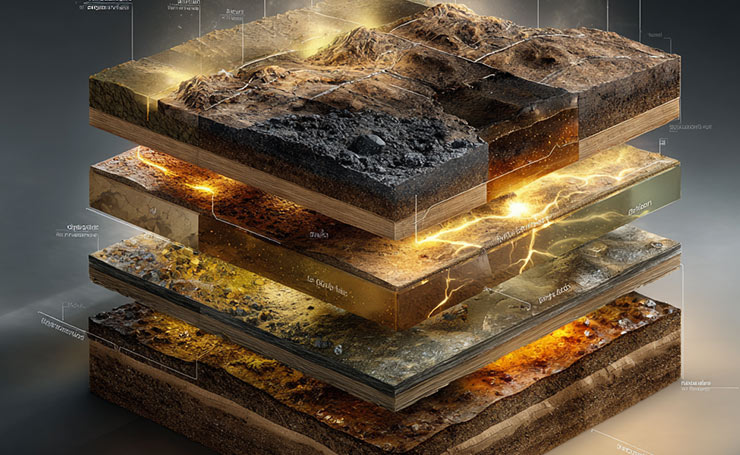
Over millions of years, this process transformed peat into coal. Peat first transforms into lignite, which is the first actual type of coal. With more pressure and temperature, lignite further turns into subbituminous and bituminous coal, which are richer in carbon.
Lastly, bituminous coal turns into anthracite coal under the right conditions, which is the highest quality of coal.
Why It Matters
This transformation of peat into coal takes millions of years. This is why coal is a fossil fuel, as it is derived from biological matter altered and compressed over geological time.
As the regeneration process of coal is so long, we are consuming it much faster than Earth can ever replenish it. You cannot expect the formation of new coal to take place, as the process takes centuries. That means that coal is a nonrenewable energy source and is finite.
So, Is Coal Renewable or Nonrenewable?
The answer is simple and clear: coal is not renewable. Let’s break down all the factors that make this conclusion.
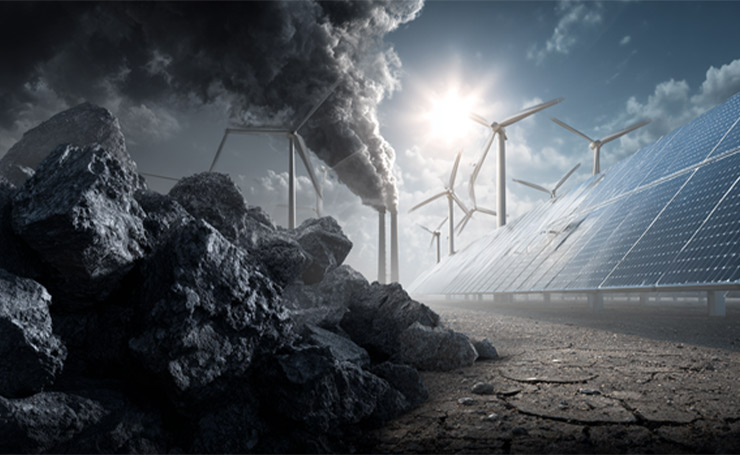
Why Coal is Nonrenewable
- Coal takes millions of years to form. Unlike solar and wind energy, we cannot regenerate it on demand.
- Once it is extracted and burned, it cannot be replaced in any humanly relevant period.
- Many reserves in the world are now depleting. In the US, experts estimated recoverable coal reserves at 248.9 billion short tons out of 469.1 billion short tons in January 2024.
- Due to finite coal resources and almost zero replenishment rate, it cannot be classified as “renewable” as it can never be indefinitely available.
Implications of Nonrenewability
- As it is a nonrenewable energy resource, coal’s sustainability for the future is in question.
- Energy systems relying on coal should consider that the supply can become expensive, difficult to extract, or completely diminish in the future.
- The environmental impact of coal and its nonrenewability are pushing nations to move toward renewable energy.
Coal Environmental Impact
Apart from being a nonrenewable resource, the use of coal negatively impacts the environment, climate, and public health.

Coal Carbon Emissions and Climate Impact
- Coal emits a high amount of carbon dioxide when it is burned. In the US, the electric power sector released 851 million metric tons of carbon dioxide from coal in 2022, which is about 55% of all carbon emissions from power generation that year.
- Globally, coal is a dominant source of CO2 emissions from fuel combustion, about 45% according to the International Energy Agency report.
- The emissions from coal are higher due to its high heat rate.
Other Pollutants
- Apart from carbon dioxide, coal plants also emit sulfur dioxide, mercury, nitrogen oxides, and particulate matter, which are harmful to both air quality and public health.
- Coal mining, whether on surface or underground, causes habitat destruction, land disturbance, and water pollution due to acid mine drainage and the release of heavy metals.
- Coal is not going to last forever, but even if there were such a hypothetical situation with “enough” coal, the negative environmental impact does not allow us to rely on it for the long term.
Coal and Electricity Generation in the US
Have a look at how coal is used currently in the US and what trends are emerging.

Role in US Electricity Generation
For many decades, coal has been the backbone of electricity generation in the United States. It played an integral role in the nation’s growth, powering homes and businesses and shaping the American economy.
Out of the total, around 675 billion kWh (16.2%) of electricity came from coal in 2023. Coal-fired power plants reliably produced a large amount of energy.
Trends of Decline and Regional Concentration
However, the coal use in US power plants has seen a significant decline in the last two decades. Multiple factors were behind it. One of the biggest factors is the rise of natural gas. It became affordable and cheaper due to the extraction process called fracking.
At the same time, renewable energy resources like solar and wind were supported by the government as cleaner alternatives. Moreover, technological improvements have also made them more affordable.
According to some energy reports, coal electricity generation in the United States has dropped as cleaner resources are being expanded. Many states are taking initiatives to reduce their carbon emissions through a coal phase-out transition.
The initiatives by the government include closing old coal plants, reducing new coal projects, and investing in clean resources like solar, wind, and hydropower.
Impacts of These Trends
High extraction costs, the finite nature of coal, and regulatory pressure are shifting the industry. This means that utilities that rely on coal energy plan for plant closures, asset retirement, and transition to other fuel and technology bases.
Coal vs Renewable Energy: The Shift Toward Clean Power
When you compare coal vs clean energy, the difference is clear in almost all aspects.
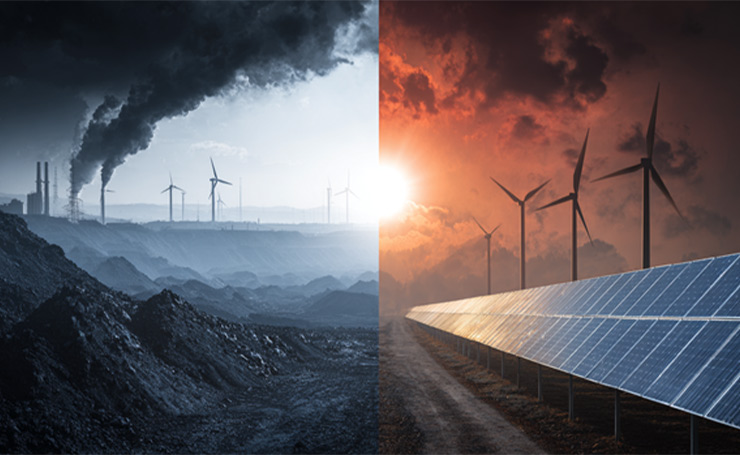
Comparison Points
Availability: Coal is a finite resource. Once it is extracted and burned, it will never be replaced on a human timescale. Whereas renewable resources, like solar and wind, are replenished naturally and are sustainable for future generations.
Cost: In the past, coal was considered one of the cheapest options for electricity generation. However, due to technological advancements, renewable energy sources have become cheaper to install and operate.
Sustainability: Coal is known for emitting large amounts of CO2 as well as sulphur dioxide, nitrogen oxides, and particulate matter. On the contrary, renewable energy resources generate power with minimal to no harmful emissions or damaging ecosystems.
Why the Shift
- Now, governments and utilities recognize that for sustainable energy, they need to rely on renewable sources, rather than nonrenewables like coal.
- Coal has become the fuel of the past, while renewable resources define the future.
The Future of Coal Energy
The future of coal is uncertain. Governments are making policies, committing to net-zero carbon goals, and sustainable options. Even when some countries still rely heavily on coal, the future goal is clear: transition to cleaner energy resources.

Moreover, efforts like carbon capture and storage (CCS) may control the emissions temporarily, but they cannot overcome the finite nature of coal. As coal consumption in the United States reduces, renewables will definitely dominate the energy landscape.
What This Means for Consumers and Policy
- For consumers, the energy systems are moving towards low-carbon sources. The phrase “coal forever” is no longer an option.
- Policymakers need to transition by ensuring energy reliability and addressing the socio-economic impact on coal-dependent nations.
In a Nutshell
So, is coal renewable? The answer is: No, coal is not renewable. It is a finite source of energy that takes millions of years to form. Once it is burned and used, it will not be possible for it to be replaced on a human timescale. Therefore, it is categorized as a nonrenewable energy resource.
For more information on sustainable energy, visit Green Energy Insights.
FAQs
Is Coal Renewable or Nonrenewable?
Coal is considered nonrenewable because it takes millions of years to form from dead plants. Once it is mined and burned, it will not be replenished within a human lifetime.
What is the Environmental Impact of Coal?
Coal causes high carbon emissions and air pollution. Mining and burning coal release harmful gases and toxins that cause climate change and environmental degradation.
How does Coal compare to Renewable Energy Resources?
In the coal vs renewable energy comparison, renewable resources win because they lead to low emissions, are affordable, and sustainable. Coal will deplete over time, but renewables like solar and wind will not be exhausted.

